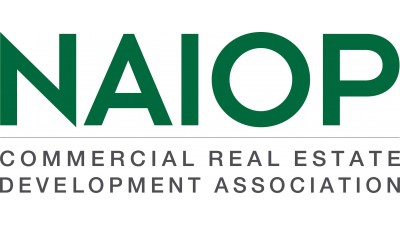Warehouse Tenants And Investors Look To Local Labor Pool To Determine Property Strength

Growing e-commerce companies and a shrinking window for last-mile delivery have pushed desirable industrial properties closer to the customer. Beyond improved delivery times, businesses and industrial developers have to contend with another key factor in site selection: the labor pool.
As distribution and fulfillment centers grow in physical footprint and reach to meet online retail demand, so has the number of employees needed to operate facilities. Industrial owners, developers and brokers need to take the labor pool into account when assessing properties.
In CBRE Executive Vice President Mindy Lissner’s experience, the size and quality of the local workforce have become top priorities.
“Five years ago, distribution centers could operate with 50 people,” Lissner said. “Now, with fulfillment, you are looking at between 200 and 500 people per shift, depending on the company. You need to have the headcount or the facility cannot operate.”
Following The Labor Pool
Metropolitan areas, by nature of having large populations, offer the greatest density of blue-collar jobs. The Greater New York area, for example, is on track to add over 103,000 working-class jobs between 2010 and 2020.
Operating facilities in urban locations also benefit from proximity to a high percentage of end users. Land comes at a premium in dense urban markets, and industrial users have found it increasingly difficult to find affordable space large enough to support the business.
“It is getting harder to find the land to build those facilities over 1M SF,” Lissner said. “Developers need to go where the land can be found, where facilities are near major roadways.”
To find a medium between adequate labor and affordable space, tenants and buyers have turned to the periphery of primary markets. In Phillipsburg, New Jersey, which has historically functioned as a transportation hub for the Northeast, CBRE has marketed industrial properties over 1M SF near a good supply of labor, Lissner said. For the local workforce, limited industrial development means new industrial tenants offer improved job opportunities closer to home.
Compared to urban markets, more rural areas require pulling from a wider labor pool.
Each market offers varying workforce demographics, and as trends shift toward faster delivery times, this too will shape how and where e-commerce tenants lease properties.
“Some e-commerce companies have shifted to a rapid dispatch center type of operation where they can reach populations better, they can deliver products to their stores more quickly, and it is easier to get transportation and logistics workers to move closer to populations,” TeamOne Logistics CEO Page Siplon said. “Some companies have shifted their whole supply chain model based on workforce demographics.”

Attracting The Labor Pool
Siplon frequently advises industrial owners and operators on aspects of technology, workforce and logistics. Beyond the property, demand from the workforce could have an impact on the quality of the asset.
Owners, developers and brokers also need to consider how the location of the site will appeal to the prospective workers who would commute to the warehouse and live in the area. Areas without access to adequate transportation or higher quality of life will not incentivize workers to apply for jobs.
“How do you get those people to the fulfillment location?” Siplon said. "The site might be cheap, because it is in the middle of nowhere or off a highway, but if you can’t get people there, and they can’t afford to live in that area, you are wasting your time.”
Educating The Labor Pool
While having a large workforce population is important, Siplon recommends industrial buyers or tenants look at skill sets within the existing demographic, as well as look for any training opportunities available to workers. Because each fulfillment center is different, owners and tenants should try to tailor training programs to match the needs of the particular center, whether that is a certain stack height or a specific type of forklift.
State-sponsored training programs have become common. Through its QuickStart Program, the state of Georgia provides industrial companies customized, job-specific training, as well as a host of other training to aid in continuous improvement of employee skills. From making donuts to assembling cars, the program develops raw talent in site-specific skills.
“Logistics is a people business,” Siplon said. “If there are no training programs, those sites will be at a disadvantage.”
Beyond job-specific training, a sought-after quality within the fulfillment center labor pool is strong soft skills, Siplon said. Employees who can work well in teams, communicate effectively and solve problems will perform better across a wider range of centers.
Know Your Neighbors
Industrial properties cannot be developed or leased in a silo. When fulfillment centers occupy the same labor pool, they will compete for resources. Some companies do not want to set up distribution centers near Amazon because they do not want to compete for workers.
“In each of the markets, there is a limited supply, and the big question is: Who are my neighbors and who is looking in the market?” Lissner said.
Fulfillment and distribution centers in northern Pennsylvania, for instance, continually have users occupying over 1M SF, Lissner said. While the large available square footage has been a selling point in the market, a concentration of nearby fulfillment centers has started to put pressure on the labor market. To stay competitive, companies might have to offer more competitive wages.
Increased competition can also have a positive impact, Siplon said. A large fulfillment facility from a notable brand can act as a nexus point, drawing workers in from other places and incentivizing them to travel further for jobs.
Hear Lissner and Siplon speak more about labor considerations in site selection at NAIOP’s I.CON: The Industrial Conference, June 7-8, in Jersey City.
To learn more about this Bisnow content partner, click here.

